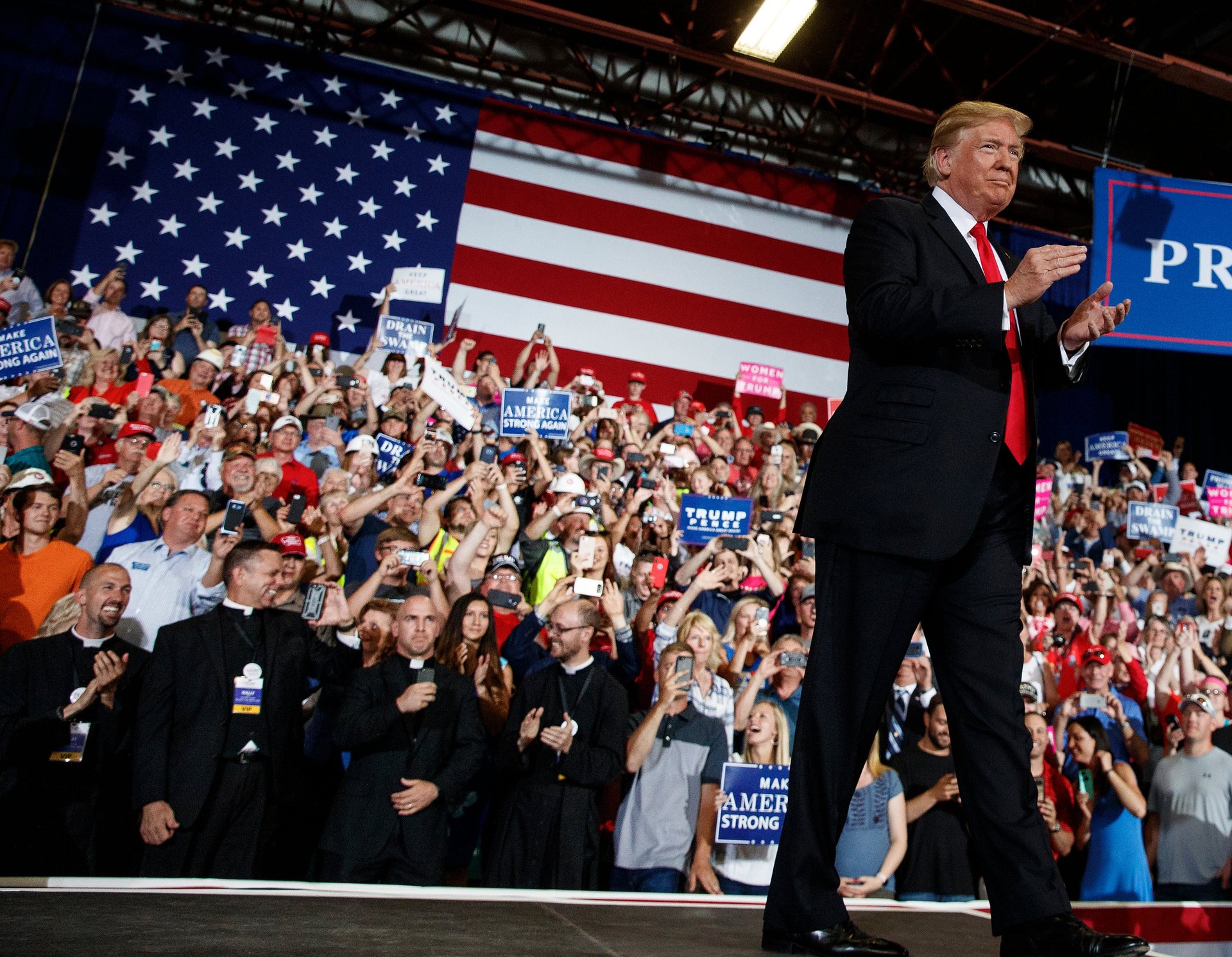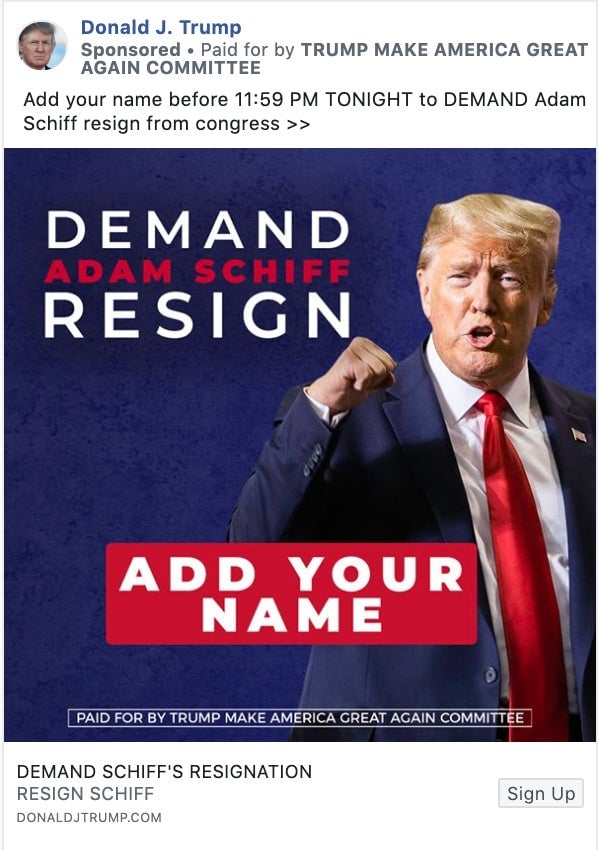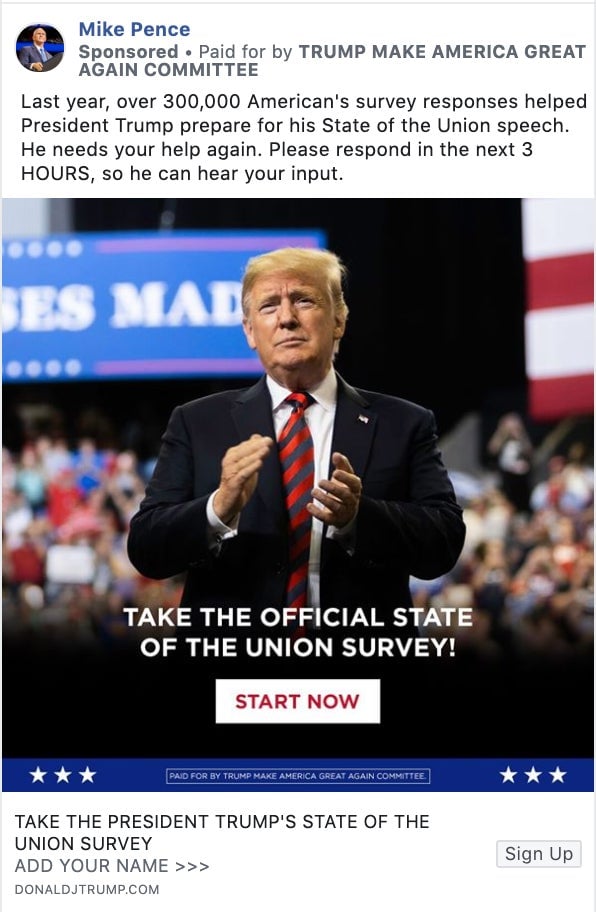If you like HBO, Audi, or the Catholic Church on Facebook, you’re likely getting targeted by Trump ads
In this microtargeting era, if you want to convince someone to vote for you, you’ve got to know who they are. So Donald Trump’s campaign, just like that of his Democratic opponents, hoovers up contact data for as many potential general election voters as possible. Trouble is, the low-hanging fruit has already been collected.


In this microtargeting era, if you want to convince someone to vote for you, you’ve got to know who they are. So Donald Trump’s campaign, just like that of his Democratic opponents, hoovers up contact data for as many potential general election voters as possible. Trouble is, the low-hanging fruit has already been collected.
So how do you find the stragglers?
One way is to target non-political groups of people based on “behavioral” traits, that is, how they act online. Since December, some Trump campaign Facebook ads have been targeted to people who like Audi cars, the HBO television network, or law enforcement. Or people interested in the Catholic Church.
Facebook assigns people to those segments based on their online activity.

That’s according to targeting data sent along with the ads by Facebook. Some of the ads are posted by Trump’s own Facebook page; others by vice president Mike Pence. All of these ads were paid for by the Trump Make America Great Again Committee, which is a cooperative effort between the Trump campaign and the Republican National Committee, which has bankrolled many of Trump’s efforts to suss out as-yet-unknown supporters.

This strategy makes a lot of sense, said Annie Levene, a Democratic digital strategist at Rising Tide Interactive. “If you think about those targeting groups—Catholics are people who are more likely to support the Trump/GOP policies (e.g. choice) and HBO and Audi would be markers for higher income levels and more likely to support Trump’s tax policies,” she said.
The Trump campaign didn’t respond to a request for comment about their ad-targeting strategy.
If you use Facebook, you can see which behavioral segments you’ve been placed into.
Many of the Trump campaign’s other Facebook ads are targeted using “custom audiences,” in which the Trump campaign uploads a list of exactly which voters it wants to see an ad. It’s impossible for anyone outside Facebook or the campaign to know who’s on each list. Other ads are targeted with “lookalike audiences”—in which the Trump campaign uploads a list of voters and asks Facebook to show the ads to people who are similar to the people on the list. This, too, is opaque to outsiders.
Facebook keeps secret the way advertisers choose to target their ads. But through a crowdsourcing project in partnership with The Globe and Mail, Quartz is able to gather a database of the targeting explanations that Facebook gives to its users, called “Why am I seeing this?” In the past, Facebook has taken steps that interfere with users’ ability to share with journalists the targeting data for the ads they’re shown.
Do you use Facebook on your computer? We need your help in understanding how campaigns, dark money groups and even fraudsters target their ads. Learn more about how to participate.